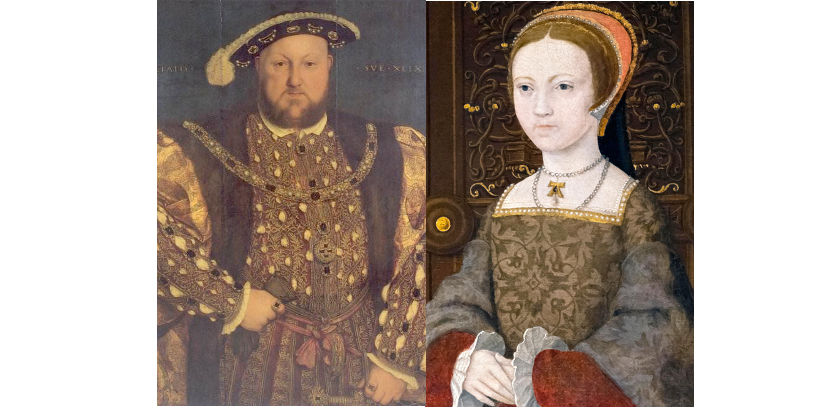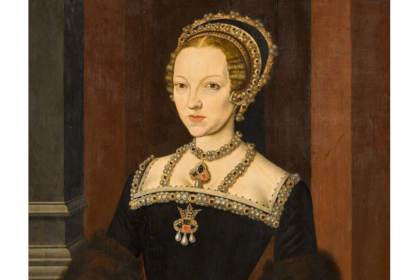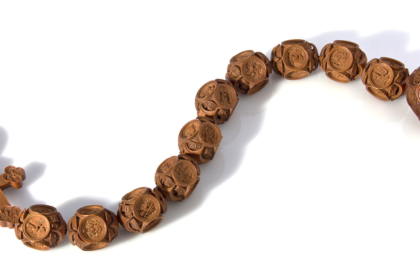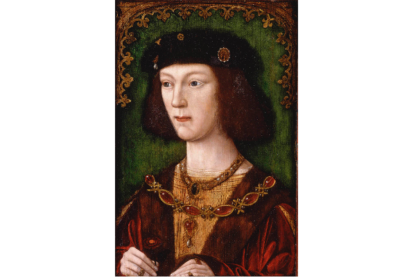There is a popular misconception that Elizabeth was at best ignored, and at worst looked upon with disfavour by her father, Henry VIII, and only achieved some level of popularity and respect at court during the reign of her brother, Edward VI. I have written previously about how Henry was actually very fond of his younger daughter, which you can read about here. One of the consequences of this misperception is that Elizabeth was powerless during her father’s reign; this isn’t necessarily an unreasonable assessment, given that she was only 13 when Henry died. However, although Elizabeth was a child, she was still a member of the royal family, and this meant that she had status and some degree of power. Patronage was an integral part of how society functioned; people would petition for favour from someone higher up the social ladder, who would then act to further the petitioner’s interests. Sometimes this could mean going through several people; a crude example would be a gentleman of the court may approach a knight, the knight approach an earl, and the earl would present the gentleman’s petition to the king. Members of the royal family, even children, even illegitimate children, were quite high up the social ladder, and were part of this system of patronage.
Not much attention is paid to the exercise of patronage by Elizabeth during her father’s reign, however, we do get a few glimpses of it. In 1545, there are two very interesting examples of Elizabeth acting as a patron.
It is important to place Elizabeth in context for these examples. In 1545, had only two years prior been restored to the line of succession, albeit fairly low down after Edward, his potential children, Mary, and his potential children. However, although the chances of her ascending to the throne seemed remote, the Third Act of Succession was a public declaration of Elizabeth’s status. At court, she was the fifth in terms of rank, after her father, Queen Catherine, and her siblings. Her age is also significant to this discussion; in 1545, Elizabeth turned 12, which was the age at which the Church considered girls to be women, legally able to marry. The potential that Elizabeth may be used to make a marital alliance with a foreign power also increased her status. All these factors meant that Elizabeth was becoming a more visible player at court, and was thus more likely to be appealed to for patronage and favour.
In January, 1545, Elizabeth acted to promote a man named John Penycote to the position of bellringer for Westminster Abbey:
“19o Januarii anno regni regis Henrici 8 36o. It is agreed by the dean and the chapiter that Jhon Penycote shall have thoffice and rowme of a bell rynger whiche shall happen nexte to be vacantt by deathe of any of thincumbenttes that nowe be and this is att the sute and requeste of the Lady Elizabethe, doughter to our soveraine lorde the kyng.
Signed: Benson, Redman, Leighton, J. Pekyns, H. Perkyns, Elfred, Carleton.”
(19th January in the 36th year of the reign of King Henry VIII. It is agreed by the dean and the chapter that John Penycote shall have the office and room of a bellringer, which shall happen at the next death of a current incumbent, and this is at the suit and request of the Lady Elizabeth, daughter of our sovereign lord, the King.)
We do not know who John Penycote was, nor how he came to the attention of Elizabeth. Possibly he was a former servant or clerk, or perhaps the relative of one of her attendants. It is possible that Penycote did not approach Elizabeth directly for this favour, but rather went through one of her attendants who then appealed to her on his behalf. Elizabeth would then have sent a message to the Dean of Westminster Abbey requesting that Penycote be granted the position. Clearly, Penycote was granted the lifetime appointment, and later records show that he and his wife leased a former anchorite house nearby.
In November of the same year, there is record of a royal warrant that was issued under the seal of the King to appoint one John Huddleston to a fellowship at King’s Hall, Cambridge, which would later be absorbed into the famous Trinity College. King’s Hall was a prestigious school, and many graduates went on to serve prominent positions in royal administrations. Again, little is known of Huddleston, though given that her tutors were graduates of Cambridge, it is likely that there is a connection through one of them.
The warrant notes that it was granted “at the suit of the Lady Elizabeth,” meaning that Elizabeth had directly approached her father with Huddleston’s request. This demonstrates that Elizabeth was in a position to seek and secure royal favour from the King himself, not only for herself as a daughter approaching her father, but also as a courtier on behalf of others. Even at 12 years old, Elizabeth was demonstrating the skills of a true courtier.





